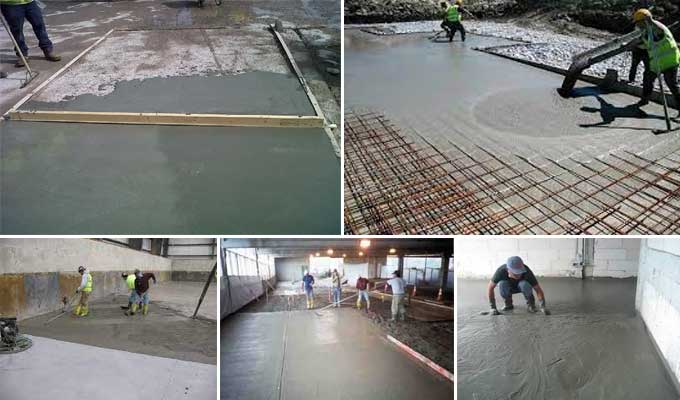
What is Concrete Topping | Advantages and Disadvantage of Concrete Topping Slab

Concrete topping is a dense, abrasion-resistant surface made from high-tensile concrete applied over a worn, old concrete surface. The concrete underneath it becomes stronger and deeper.
A concrete topping involves covering a worn-out concrete layer with a stronger concrete layer. The process consists of laying a layer of concrete on top of an existing concrete slab to finish the surface.
Types of Concrete Topping
Bonded Topping Slab
Concrete toppings are adhering to or bonded to the concrete slab underlying them in this type of slab. Traditionally, attached slabs are both structurally and functionally useful. It is possible to use Bonded Concrete Slabs for both lightweight and heavyweight slabs. A bonded concrete slab must be at least 1 to 2 inches thick.
Un-bonded Topping Slab
A Topping Slab of this type is not bonded to the underlying concrete slab. The two slabs do not connect.
There is no mechanical attachment or bonding between the top layer of concrete and the structural floor beneath. When two slab courses are to move independently of each other or when the topping slab is to replace & un-bonded systems are used. Ideally, the construction should be un-bonded and at least 100mm thick. The base slab contains cracks, or the bonding is partially or ineffective.
Working Procedure of Concrete Topping
Requirement of Concrete Base
It is necessary to conduct a preliminary assessment before laying concrete on top of existing concrete. The concrete on top must be firm and stable. As the topping concrete does not cover the cracks in the existing concrete, they will appear in the topping concrete as well over time. The base must be strong to ensure adhesion between the old concrete and the new concrete & Fragile concrete should not use.
Concrete Preparation
This step is necessary when laying top concrete because it ensures that old and new concrete adheres to each other. It is essential to lay the topping slab on a level, clean, dust-free concrete surface. It is necessary to remove the concrete topping completely before laying the slab.
When a smooth finish applies to the base concrete by mechanical scabbing or scarification, the coarse aggregate must be visible. A vacuum cleaner should remove loose debris, dirt, and dust. Choosing the right time to prepare the base concrete is crucial. For best results, you should prepare the base a day before placing the top slab, to prevent contamination and accumulation of dirt.
Placement of Concrete
It is essential to determine the nature of the existing slab before placing the topping concrete. The absorption rate of water in the base slab should measure after pouring a small amount of water into it.
It is important to leave the slab wet for at least four hours before placing the topping concrete and remove the water before placing the slab. Wet concrete absorbs water from the base slab once it is placed in the base, resulting in dry concrete above being water deficient. It is possible to lay the topping concrete as usual if there is no evidence of water absorption. 50-100 mm is the standard thickness of a topping slab. Steel reinforcement is provided following the slab thickness and requirement.
Curing
Proper concrete curing is necessary to ensure maximum strength, maximum resistance to surface abrasion, low impermeability. Curing prevents or minimizes cracks caused by drying shrinkage.
By delaying the effects of differential drying until the concrete can resist its effects, cure also reduces the effect of differential shrinkage and curling. At least seven days must pass after the curing completion.
Final Touch
Various factors, such as place, use, and surface requirements, determine the type of finishing required for topping concrete. Concrete topping applies to an existing slab to provide a rough finish on the flooring. When placed over floor concrete, the concrete can smooth out.
Benefits of Concrete Topping
? Floors with a thicker layer.
? Concrete that is clean and will hide flaws evident in the original concrete.
? Floors can be polished or used as a base for alternative flooring products if they are level and flat.
? Concrete that is weak and fragile needs to be strengthened.
? Equipment that is less prone to wear or that is easier to drive.
? Reduction in the cost of construction repair.
To learn more, watch the following video tutorial.
Video Source: CreativeColorsDye
Drawbacks of Concrete Topping
? It is possible for cracks to form between new and old slabs due to a lack of bonding.
? Concrete layers placed on top of existing ones increase the dead load.
? Adding concrete to an existing slab raises its level.
Uses of Concrete Topping
? Providing waterproofing is the purpose of the topping slab.
? As a result, the slab underneath is protected from abrasion.
? Providing a wearing course, it supports loads that come upon it.
? The floor has a level surface.
? Additional superimposed bearing capacity can be developed with a topping slab.


